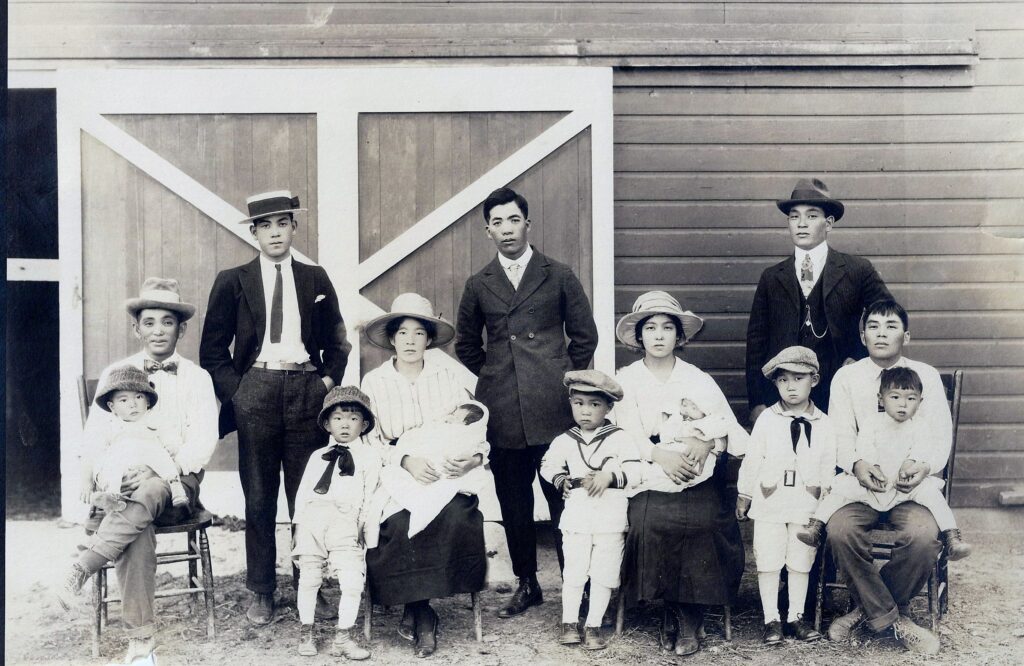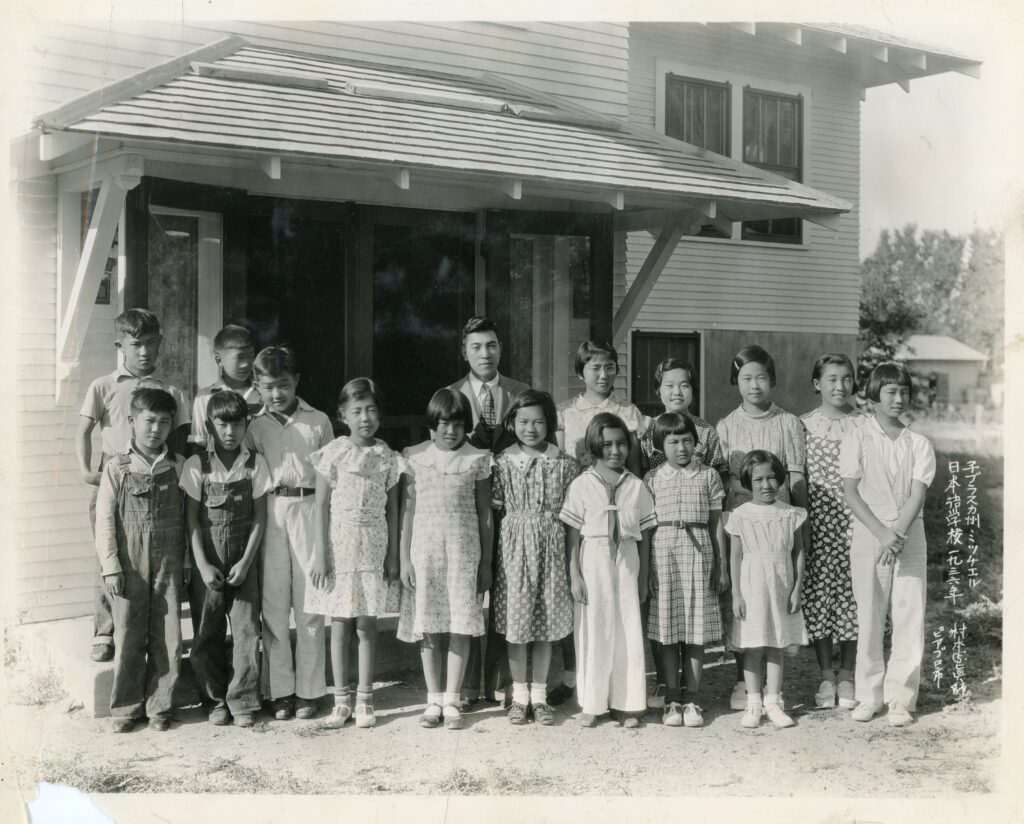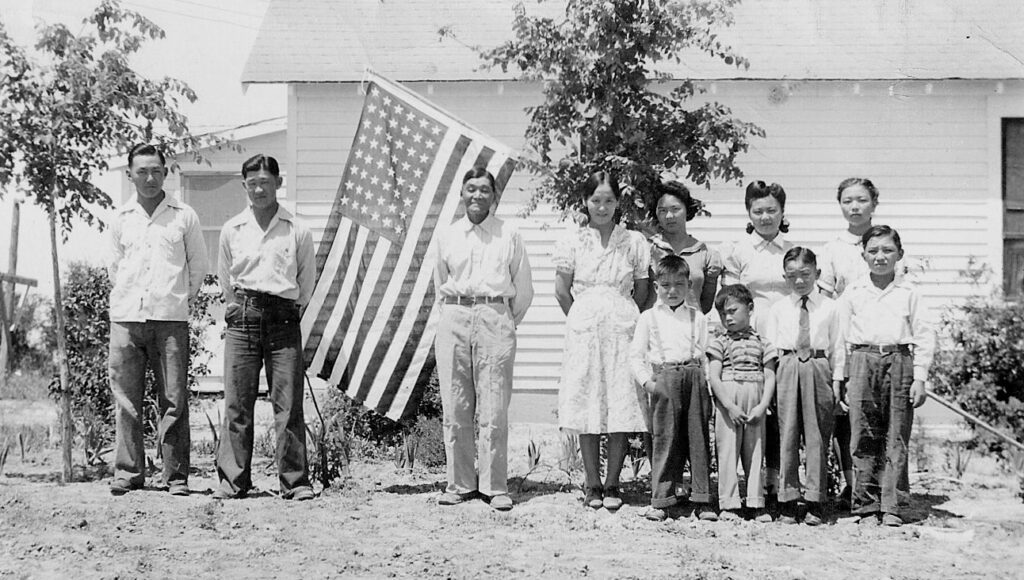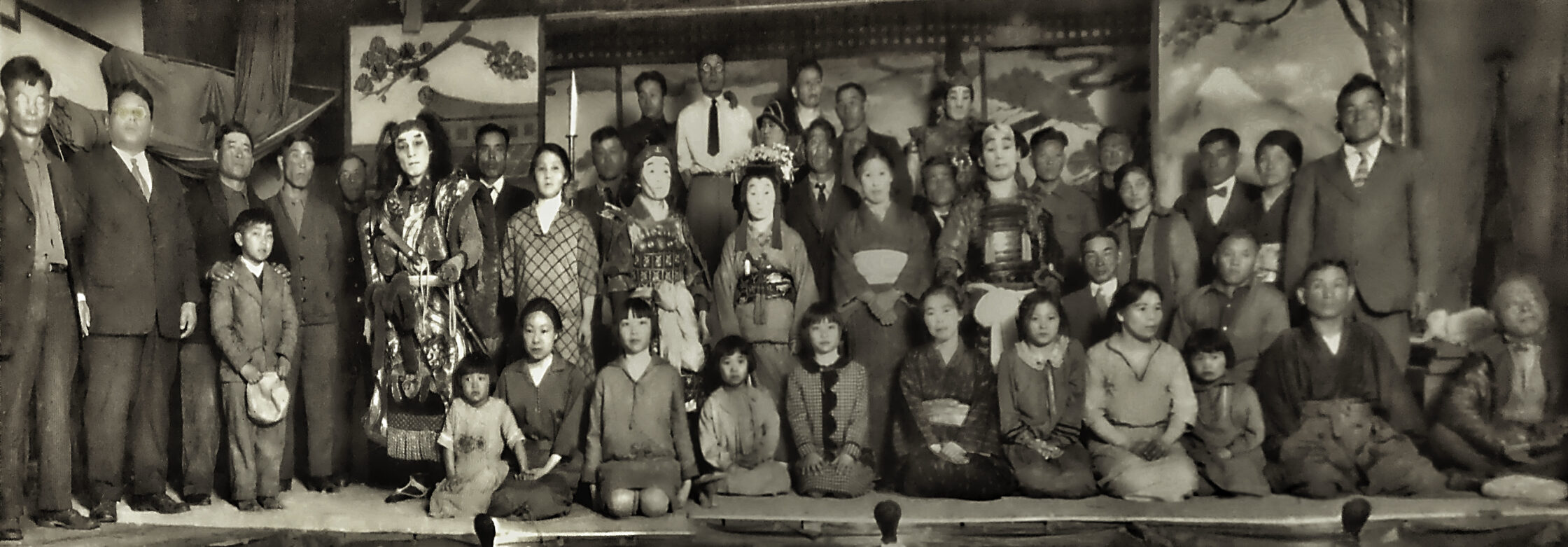It is no small task to preserve a people’s legacy.
It involves collecting even the smallest personal stories – a grandfather and his neighbors digging out a basement by hand, a couple’s hasty marriage at a seaport – and placing them within the broad scope of history. It involves years of research, collecting artifacts and building relationships. Most of all, it involves a sincere belief in the ability of the past to inform the present.
And, sometimes, it involves uprooting a 90-year-old building, placing it on a truck and hauling it from Scottsbluff to Gering.
On Dec. 10, 2019, construction crews moved a nondescript white-sided building from 1705 Avenue C in Scottsbluff to its new home at the Legacy of the Plains Museum, located on the Oregon Trail at the base of the Scottsbluff National Monument.
Constructed in 1928, the building is the most visible reminder of a generation of Japanese immigrants who, early in the 20th century, settled in western Nebraska, building a community in the state that endures to this day. For decades, the structure, known as the Japanese Hall, served as a gathering place for Japanese-American families in the area. It hosted Japanese language classes, dances, church services, theater shows – a community’s hub.
In its next life, the building will serve as a permanent fixture at the Legacy of the Plains Museum. It will showcase exhibits that tell the story of Nebraska’s Japanese community: What brought them here, and how they became part of a community – and built their own – despite the challenges of American life.
“I think it’s important to showcase the support that many of the Japanese Americans received,” said Vickie Sakurada Schaepler, coordinator of the Japanese Hall and History Project at the Legacy of the Plains Museum and the driving force behind the effort to preserve the Japanese Hall. “I don’t want this story lost. I don’t want people to forget that there were Japanese immigrants that came to our state, and that people supported them and helped them to live and prosper here.”

They came, initially, to work on the railroad.
In 1882, responding to a groundswell of anti-Chinese bigotry that followed heavy immigration during the Gold Rush and construction of the First Transcontinental Railroad, the U.S. passed the Chinese Exclusion Act, banning Chinese immigration.
Japanese immigrants, encouraged by the Meiji Restoration, a period of political and social change that saw an embrace of Western values, began to replace the Chinese as laborers on the railroad and in coal mines. Many came hoping only to make money to send back to their families, fully intending on returning to Japan someday.
In Japanese communities in North and South America today, this initial group of immigrants is known as issei, or “first generation.”
They began on the West Coast – California, Oregon, Washington – and eventually moved east, with some settling down to farm sugar beets on the High Plains when work on the railroad ended. By 1900, at least 700 Japanese had reached the Missouri River in Nebraska, according to “A History of the Japanese in Nebraska,” by the Rev. Hiram Kano, a man who would earn renown in his chosen state.
As the years passed, and Japanese immigration increased, so did racial animosity, echoing what had happened to Chinese immigrants decades earlier. In 1907, the U.S. and Japan entered into the so-called “Gentlemen’s Agreement,” in which Japan agreed to limit emigration of aspiring workers to the U.S., while the U.S. agreed to allow for the immigration of wives, children and parents of the many Japanese men already living here.
That agreement led to an influx of “picture brides,” Japanese women who agreed to marry Japanese men in the U.S. through a family arrangement, which often paired the couple using photographs. Couples were often married from afar by proxy, with a photograph standing in for the groom, Kano wrote.
These types of ceremonies were valid in Japan, giving the new bride access to travel documents she needed to meet her husband on the docks in the U.S. There, he would often be waiting with an officiant to perform a second ceremony right then, standing on the dock.
This is how Takehiko Miyoshi and his wife Takeyo were married, said the couple’s grandson, John Miyoshi, a retired conservation manager and member of the Nebraska Community Foundation Board of Directors who serves as the project manager for the Japanese Hall. The couple later established a successful farm near Hershey.
“I think people can be quite resourceful when they need to be,” Miyoshi said.
Many, like the Miyoshi family, put roots deeply into the Nebraska soil.
“Why is it the Japanese immigrants who had come to America to make money to be sent back… decided not to return to Japan, but to stay permanently in the United States?” Kano wrote. “They were now accustomed to the American way of life. They had learned enough English to get along in their daily lives. They felt comfortable here since this was not a strange land anymore.”
The issei married and gave birth to a second generation – the nisei. These families formed strong ties with neighbors in and around Scottsbluff and North Platte, and, of course, with other Japanese American families. They built social halls – one in Mitchell and one in Scottsbluff – where they held theater productions and church services, made mochi (Japanese rice cakes) and played baseball – friendly places where they could gather and bond over their shared heritage.

But the nisei, the new generation, would come of age in a time of intense turmoil, particularly for people of Japanese descent living in America.
Legal discrimination was nothing new. In Nebraska and other states, thanks to alien land laws that purposefully discriminated against people of Asian ancestry, the foreign-born issei weren’t allowed to own farmland.
But after the Japanese bombing of Pearl Harbor on Dec. 7, 1941, things got far worse. In February 1942, President Franklin Delano Roosevelt signed Executive Order 9066, forcing the relocation of people of Japanese ancestry living on the West Coast into internment camps further inland.
The chill descended everywhere.

In Nebraska, the Japanese social halls closed, Schaepler said. Friends advised their Japanese neighbors to erect crosses to make the buildings look like churches and hopefully spare them from being vandalized.
Within hours of the attack on Pearl Harbor, Kano, a Nebraska farmer and Episcopal priest who had come to the U.S. in 1916 to study agriculture at the University of Nebraska-Lincoln, was stopped by police in North Platte who interrogated him about family ties to the Japanese government. Deemed a threat to national security, he was imprisoned in an internment camp where he remained for nearly three years until his release in 1944.
Despite heightened institutional and social persecution during the war, many second-generation nisei stepped up to join the war effort. Nebraska’s Ben Kuroki, born in Gothenburg in 1917, flew 58 bombing missions during the war, receiving three Distinguished Flying Crosses and a Distinguished Service Medal decades later.
Schaepler’s uncle, Shogi Sakurada, served in the U.S. Army’s 100th Infantry Battalion, mostly composed of nisei soldiers. Her father, Shizuo Sakurada, served in the legendary 442nd Infantry Regiment, also composed almost entirely of soldiers of Japanese ancestry and recognized as the most decorated unit for its size and length of service in American history.


Left: Shogi Sakurada served in the US Army’s 100th infantry battalion during World War II. Shizuo Sakurada served in the famed 442nd infantry battalion. Photo courtesy of Vickie Sakurada Schaepler.
Right: A studio portrait of Tokuzo Sakurada taken around 1920. Sakurada, one of the original Japanese immigrants to western Nebraska, was one of the men who helped build the Japanese Hall in Scottsbluff. Photos courtesy of History Nebraska
Decades later, in 2012, Schaepler attended a celebration of life at the Japanese Hall in Scottsbluff. She saw her grandpa’s picture hanging on the wall. It hung alongside black-and-white photos of the original issei who helped build the hall in 1928.
She decided: This hall was too important to lose.

“I started to ask my aunts and uncles about it, and they go, ‘Oh yeah. Grandpa used to talk about digging out the basement by hand and hauling out the dirt with their wagons and shoes,” Schaepler said. “They were talking about demolishing the building … The people who were holding the building were getting older and didn’t feel the need to care for it. So, I’m driving home, and I come up with this idea: I’m going to save that hall.”
In recent decades, the Japanese-American community in western Nebraska has dwindled, Schaepler said. Reflecting broad national trends, families have left rural communities for cities. Now Schaepler, a member of the third-generation sansei, estimates the number of descendants of the original issei still living in the area to be a few dozen. Which makes preserving the stories of their parents and grandparents all the more important, she said.
“We hope it gives more of a base for the community, and it gives an opportunity to bring some of the people of Japanese heritage together, and we’re seeing a little of that already,” said Miyoshi. “As these people learn about the museum whether they’re in state, or out of state, or have relatives here or lived here at one time, we’re hearing from so many of them that want to be a part of it.”
After a successful fundraising effort to move the building, COVID-19 seriously delayed further progress, Schaepler said. Over the past year, Schaepler, Miyoshi and others involved in the project have focused on bringing the hall up to code. They’re planning a grand opening in the summer of 2023.
“It’s been such a wonderful project for me because I’ve learned so much,” Schaepler said. “I’ve met so many people that are interested in this history.”


2 Comments
The U.S. Army’s WWII 100th Battalion was originally a National Guard unit based in Hawaii. Those soldiers were the first Japanese-Americans to serve in Europe. They served in North Africa and Italy with distinction and paved the way for the Nisei soldiers from the mainland to join the fight. The 442d was a “regimental combat team” which consisted of several infantry battalions, artillery as well as an anti-tank battalion. The 100th was folded into the 442d, but those soldiers did not want to lose the 100th number as it was deeply identified with Hawaii. So the 442d assigned the 100th battalion to be its 1st battalion and officially referred to it as the 100th. I am Takehiko and Takeyo Miyoshi’s grandson. Their daughter, Sara, married my father, Sam Terasaki, in 1952. Before that, he served in the 100th Bn/442d RCT as a weapons squad leader in the winter and spring of 1945.
Thank you for this interesting article! It is so important that we as Nebraskans learn about our history- as it certainly has relevance to our situations today. I graduated from North Platte high school and UNL undergrad and learned none of this history (back in 60s and 70s) . Hopefully our children can learn this history so we do not make the same mistakes!